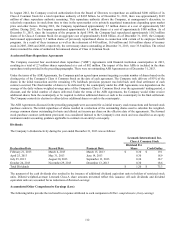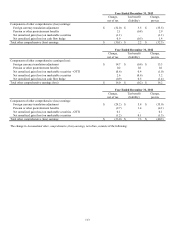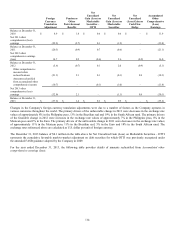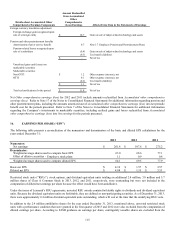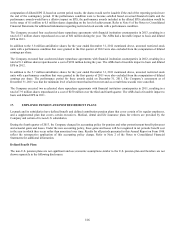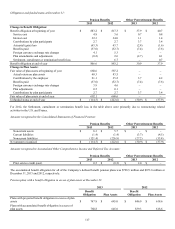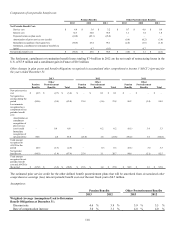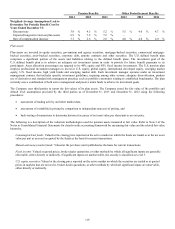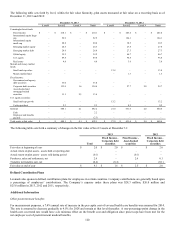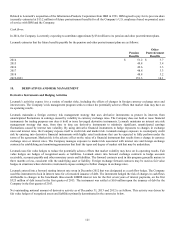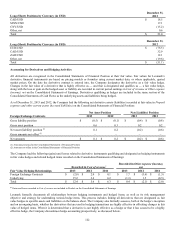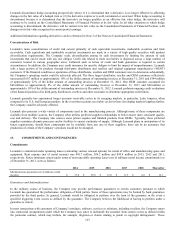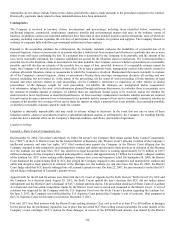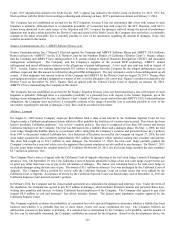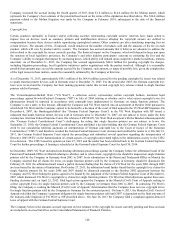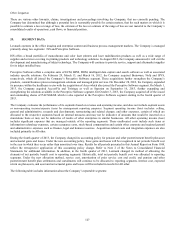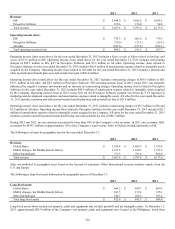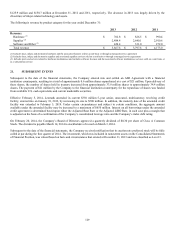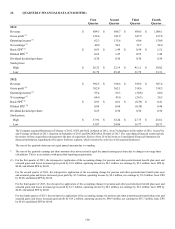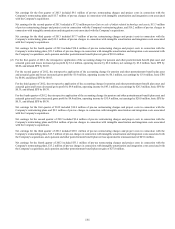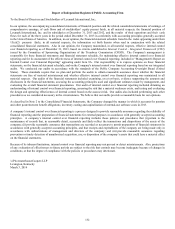Lexmark 2013 Annual Report Download - page 126
Download and view the complete annual report
Please find page 126 of the 2013 Lexmark annual report below. You can navigate through the pages in the report by either clicking on the pages listed below, or by using the keyword search tool below to find specific information within the annual report.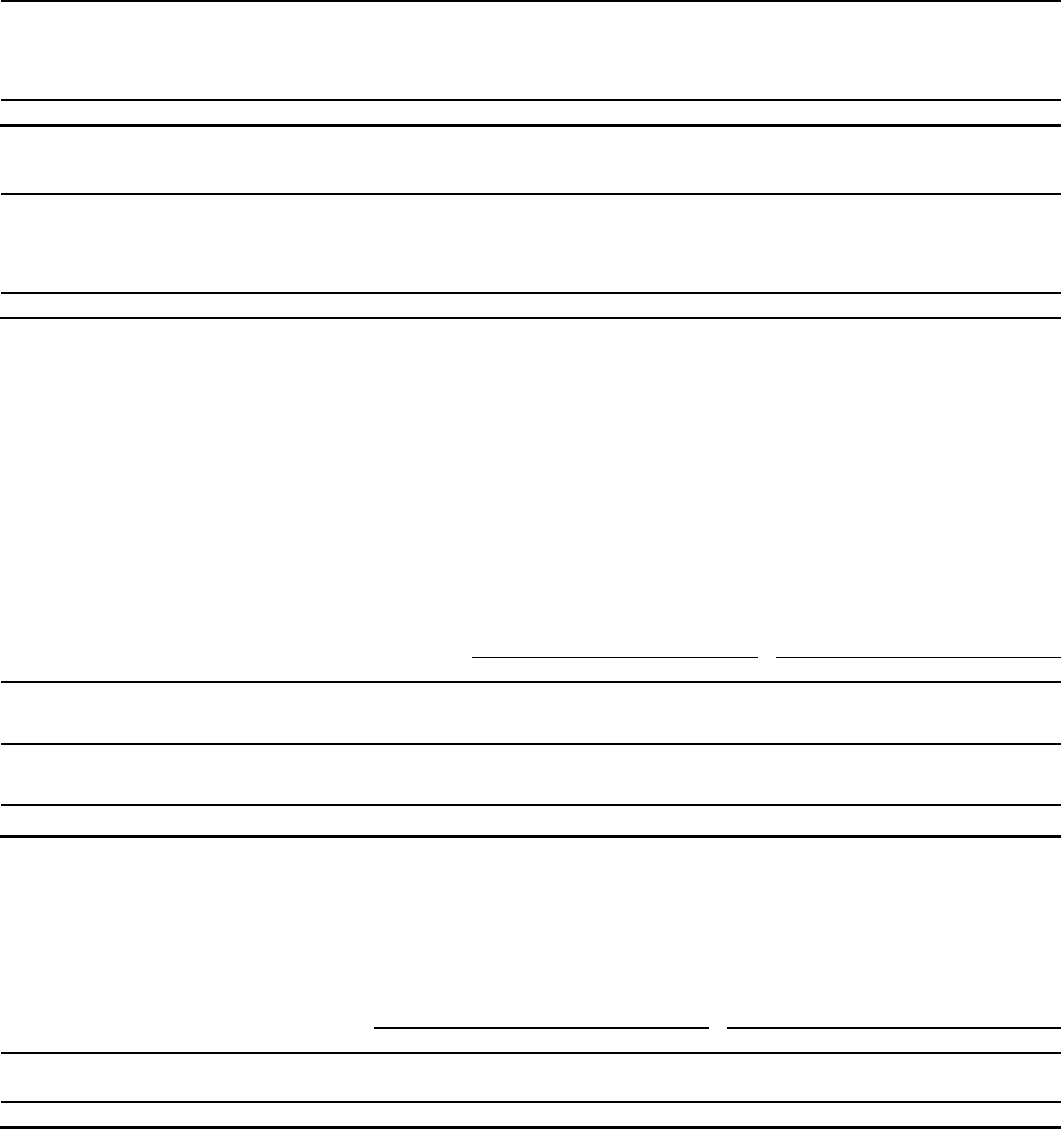
Long (Short) Positions by Currency (in USD)
December 31,
2013
CAD/USD $ 18.5
MXN/USD 17.1
CNY/USD (15.2)
Other, net 0.6
Total $ 21.0
Long (Short) Positions by Currency (in USD)
December 31,
2012
EUR/USD $(76.5)
CAD/USD 32.9
ZAR/USD 12.1
Other, net (19.6)
Total $(51.1)
Accounting for Derivatives and Hedging Activities
All derivatives are recognized in the Consolidated Statements of Financial Position at their fair value. Fair values for Lexmark’s
derivative financial instruments are based on pricing models or formulas using current market data, or where applicable, quoted
market prices. On the date the derivative contract is entered into, the Company designates the derivative as a fair value hedge.
Changes in the fair value of a derivative that is highly effective as — and that is designated and qualifies as — a fair value hedge,
along with the loss or gain on the hedged asset or liability are recorded in current period earnings in Cost of revenue or Other expense
(income), net on the Consolidated Statements of Earnings. Derivatives qualifying as hedges are included in the same section of the
Consolidated Statements of Cash Flows as the underlying assets and liabilities being hedged.
As of December 31, 2013 and 2012, the Company had the following net derivative assets (liabilities) recorded at fair value in Prepaid
expenses and other current assets (Accrued liabilities) on the Consolidated Statements of Financial Position:
Net Asset Position Net (Liability) Position
Foreign Exchange Contracts 2013 2012 2013 2012
Gross liability position $ (0.5) $ (0.1) $ (0.4) $ (0.8)
Gross asset position 0.6 0.3 0.2 0.2
Net asset (liability) position (1) 0.1 0.2 (0.2) (0.6)
Gross amounts not offset (2) – – – –
Net amounts $ 0.1 $ 0.2 $ (0.2) $ (0.6)
(1) Amounts presented in the Consolidated Statements of Financial Position
(2) Amounts not offset in the Consolidated Statements of Financial Position
The Company had the following (gains) and losses related to derivative instruments qualifying and designated as hedging instruments
in fair value hedges and related hedged items recorded on the Consolidated Statements of Earnings:
Recorded in Cost of revenue*
Recorded in Other expense (income),
net
Fair Value Hedging Relationships 2013 2012 2011 2013 2012 2011
Foreign Exchange Contracts $ (2.8) $ 2.0 $ 0.1 $ 1.7 $ (3.6) $ (1.5)
Underlying 15.2 3.6 6.2 (1.3) 1.5 (0.5)
Total $ 12.4 $ 5.6 $ 6.3 $ 0.4 $ (2.1) $ (2.0)
* Gains and losses recorded in Cost of revenue are included in Product on the Consolidated Statements of Earnings
Lexmark formally documents all relationships between hedging instruments and hedged items, as well as its risk management
objective and strategy for undertaking various hedge items. This process includes linking all derivatives that are designated as fair
value hedges to specific assets and liabilities on the balance sheet. The Company also formally assesses, both at the hedge’s inception
and on an ongoing basis, whether the derivatives that are used in hedging transactions are highly effective in offsetting changes in fair
value of hedged items. When it is determined that a derivative is not highly effective as a hedge or that it has ceased to be a highly
effective hedge, the Company discontinues hedge accounting prospectively, as discussed below.
122


